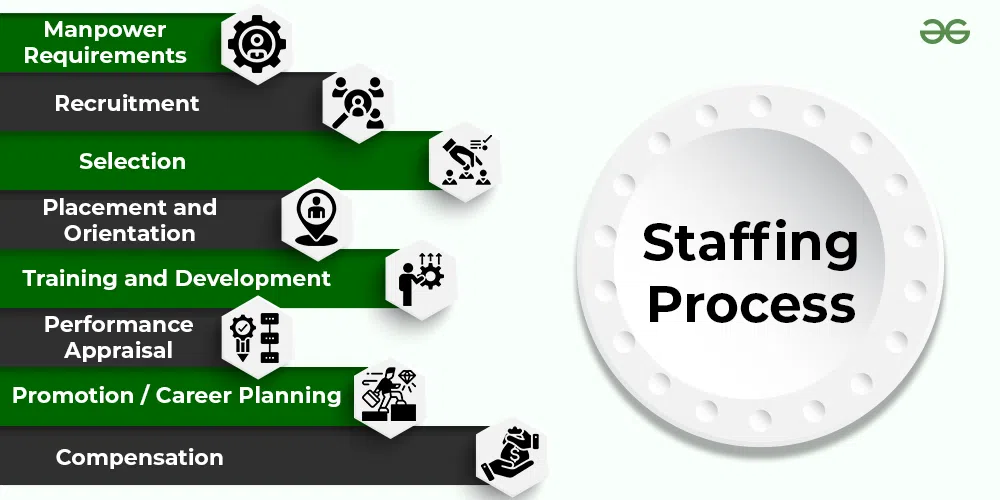Letting Loose the Power of Information: Enhancing Human Resources Methods With Cutting-Edge Staffing Management Software Application
By using the power of information analytics, organizations can not only boost their employment methods but likewise enhance staff member retention and efficiency. The synergy between data-driven insights and advanced innovation offers an engaging possibility for Human resources professionals to revolutionize their strategy in the direction of skill monitoring.
Relevance of Data-Driven HR Approaches
Why have data-driven human resources methods come to be crucial in modern-day service operations? In today's affordable and busy service environment, companies are progressively relying upon data-driven understandings to make educated choices. Data-driven HR techniques make it possible for firms to enhance their workforce monitoring, employment processes, and staff member interaction initiatives. By analyzing data associated with staff member performance, turn over rates, and skill gaps, HR divisions can identify trends, anticipate future requirements, and develop positive solutions to attend to obstacles.
Data-driven HR strategies likewise play a crucial function in enhancing employee satisfaction and retention. Through the analysis of employee comments, performance evaluations, and training results, human resources specialists can tailor specific advancement plans, identify high-potential staff members, and cultivate a society of constant understanding and growth within the organization. Data-driven insights make it possible for Human resources teams to align their approaches with the overall service objectives, making certain that skill management initiatives straight add to organizational success.
Benefits of Staffing Management Software Program
Making use of staffing monitoring software application simplifies the employment and onboarding procedures for HR departments, improving performance and accuracy in ability procurement. One significant benefit of this software application is the capacity to streamline prospect information, making it quickly accessible for employment groups. By having all applicant details in one area, human resources specialists can effectively track prospect development, interact properly with possible hires, and make sure a smooth recruitment experience.
Additionally, staffing monitoring software program typically includes attributes such as resume analyzing and key phrase matching, which help in quickly recognizing leading candidates that match the job demands. This automation decreases the time spent on hands-on return to screening, permitting HR personnel to focus on more strategic jobs. staffing management software. In addition, these systems can integrate with work boards and social networks platforms, expanding the reach of work posts and drawing in a diverse pool of prospects
Furthermore, analytics and reporting devices within staffing management software application give useful understandings into recruitment metrics, such as time-to-fill and cost-per-hire. This data-driven approach makes it possible for human resources teams to make enlightened choices, enhance employment techniques, and enhance overall employing processes. By leveraging these advantages, organizations can streamline their ability purchase initiatives, enhance candidate experience, and inevitably construct a solid workforce.
Enhancing Employment Processes With Data
By leveraging information, business can make even more informed decisions throughout the recruitment lifecycle, ultimately leading to far better hires and boosted retention prices. One essential means data boosts recruitment processes is by maximizing task posts based on understandings from past effective hires.
Furthermore, information analytics can enhance the screening and selection process by identifying patterns in prospect qualifications and efficiency signs. This makes it possible for recruiters to concentrate their initiatives on candidates that are most likely to succeed in the duty, conserving time and resources. Furthermore, data-driven recruitment techniques can help reduce bias in the employing procedure by offering objective understandings right into candidate credentials and prospective fit within the company. On the whole, incorporating information right into employment procedures encourages organizations to make smarter working with decisions and develop high-performing groups.
Improving Worker Retention With Modern Technology

One method modern technology can boost staff member retention is through making use of employee interaction systems. These platforms enable real-time comments, recognition, and interaction in between workers and administration, fostering a culture of appreciation and support. Furthermore, innovation can make it possible for tailored understanding and growth programs tailored to private staff member requirements and profession desires, increasing job satisfaction and commitment.
Moreover, information analytics devices can aid companies identify patterns and trends connected to staff member turn over, enabling them to take aggressive actions to address possible problems before they rise. Generally, by leveraging technology efficiently, companies can create a more supportive more information and engaging workplace that encourages employees to remain and grow within the firm.
Maximizing Workforce Productivity With Information

Via the evaluation of information, human resources departments can recognize patterns and Resources fads that impact productivity degrees. For instance, by tracking worker job hours and job completion rates, companies can enhance work timetables to make sure that jobs are efficiently distributed among group members. Additionally, information can reveal ability gaps within the workforce, permitting human resources to carry out targeted training programs that boost worker abilities and general productivity.
In addition, data-driven efficiency examinations allow supervisors to give particular responses and assistance to staff members, promoting a society of continual enhancement. Overall, leveraging information to make the most of workforce performance is a tactical method that equips organizations to accomplish their objectives successfully and effectively.
Final Thought
Finally, using innovative staffing monitoring software can substantially boost human resources methods by leveraging the power of information. By including data-driven employment procedures, boosting worker retention through modern technology, and taking full advantage of labor force efficiency, organizations can improve their operations, make even more educated decisions, and inevitably achieve greater success in handling their human resources. Welcoming these technological improvements is essential in the ever-evolving landscape of human source management.
Data-driven Human resources approaches allow companies to enhance their labor force management, recruitment procedures, and worker involvement initiatives. By assessing data associated to worker efficiency, turnover prices, and skill voids, HR departments can recognize patterns, predict future needs, and create aggressive options to resolve challenges.
